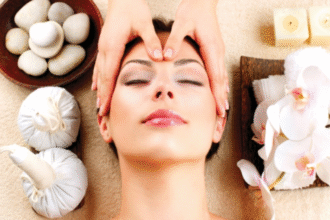Living with anxiety can feel like walking through life with a constant weight on your shoulders. If you’re among the millions struggling with persistent worry and fear, you’re not alone.
Recent statistics show that approximately 31% of American adults will experience an anxiety disorder at some point in their lives, with generalized anxiety disorder (GAD) affecting nearly 6.8 million adults in the United States alone.
The impact on daily functioning can be profound, affecting everything from work performance to personal relationships.
Understanding Your Anxiety: The First Step to Recovery
Before diving into management techniques, it’s crucial to understand what’s happening in your brain and body when anxiety strikes. This knowledge forms the foundation for effective treatment and self-management strategies.
The Science Behind Anxiety
At its core, anxiety is your body’s natural response to stress—a complex interaction between brain chemistry, environmental factors, and genetic predisposition. When you experience anxiety, your amygdala (the brain’s fear center) triggers a cascade of stress hormones like cortisol and adrenaline, preparing you for “fight or flight.”
Recognizing GAD Symptoms
Generalized Anxiety Disorder Treatment often begins with recognizing the distinctive pattern of symptoms. Unlike occasional worry, GAD involves persistent, excessive anxiety about multiple aspects of life for at least six months. Physical symptoms might include restlessness, fatigue, difficulty concentrating, irritability, muscle tension, and sleep disturbances. These symptoms can significantly impact your quality of life if left unaddressed.
The Anxiety Cycle
Understanding the cyclical nature of anxiety is critical. Anxious thoughts trigger physical sensations, which then reinforce more anxious thinking. Breaking this cycle requires targeted interventions at multiple points addressing thoughts, physical responses, and behaviors simultaneously.
Now that we understand what’s happening in your body and mind, let’s explore our first evidence-based technique mindfulness practices specifically tailored for GAD sufferers that can help interrupt the anxiety cycle you’ve just learned to identify.
1. Evidence-Based Mindfulness Practices for GAD
Mindfulness isn’t just a buzzword—it’s a scientifically validated approach to manage anxiety symptoms. These practices help you develop awareness of present-moment experiences without judgment, breaking the cycle of worry about the future.
The Science of Mindfulness for Anxiety
Research shows that regular mindfulness practice actually changes brain structure in areas associated with anxiety and stress. The amygdala (your brain’s alarm system) becomes less reactive, while the prefrontal cortex (responsible for rational thinking) strengthens its regulatory abilities.
GAD-Specific Mindfulness Exercises
Unlike general mindfulness, GAD-focused techniques specifically target worry patterns. The “clouds in the sky” visualization helps you observe anxious thoughts without engagement—imagine each worry as a cloud passing through your mind. You acknowledge its presence without following it.
Daily Micro-Practices
Even five minutes of focused mindfulness daily can reduce baseline anxiety. Try the 5-5-5 technique: inhale for 5 counts, hold for 5, exhale for 5, focusing completely on the sensation of breathing. This simple practice activates your parasympathetic nervous system, counteracting the stress response.
While mindfulness helps you observe anxious thoughts without judgment, the next technique takes intervention a step further by teaching you how to actively challenge and reshape the thinking patterns that feed your anxiety.
2. Cognitive Restructuring Strategies
Our thoughts powerfully influence our emotions. Cognitive restructuring provides tools to identify, challenge, and change the distorted thought patterns that fuel anxiety.
Identifying Anxiety-Specific Thought Distortions
GAD often involves particular thinking errors: catastrophizing (“this minor symptom must mean I have a terminal illness”), fortune-telling (“I know the presentation will be a disaster”), and all-or-nothing thinking (“if I’m not perfect, I’m a complete failure”). Learning to spot these patterns is the first step toward challenging them.
The ABCD Method
This powerful technique breaks down anxious episodes into manageable components: Activating event (what triggered the anxiety), Beliefs (your thoughts about the event), Consequences (how you felt and acted), and Dispute (challenging the unhelpful thoughts). By systematically working through this process, you can reduce manage anxiety symptoms more effectively.
Practical Thought Challenging
Try asking yourself: “What’s the actual evidence for this thought?” “What would I tell a friend with this worry?” “What’s the worst that could happen, and could I cope if it did?” These questions help create distance from anxious thoughts and introduce more balanced perspectives.
Armed with tools to restructure anxious thinking, you’re now ready to face situations you might be avoiding—through a systematic approach that builds confidence while gradually reducing fear responses.
3. Progressive Exposure and Behavioral Activation
Anxiety often leads us to avoid what we fear, but avoidance actually strengthens anxiety over time. Progressive exposure helps you gradually confront anxiety-provoking situations in a controlled, systematic way.
Creating Your Anxiety Hierarchy
Start by listing anxiety triggers from least to most challenging. Rate each situation on a scale of 0-100 for anticipated distress. For example, making a phone call might rate 30, while giving a presentation could be 90. This creates your roadmap for gradual exposure.
SMART Goals for Exposure Practice
Effective exposure goals are Specific, Measurable, Achievable, Relevant, and Time-bound. Instead of “be less anxious socially,” try “attend a 30-minute department meeting and ask one question” or “have a 5-minute conversation with a store clerk.”
Building Confidence Through Successes
Each successful exposure builds evidence against your anxious predictions. Track your progress by noting expected anxiety versus actual experienced anxiety. Most people discover their fears were significantly overestimated, which provides motivation to continue practicing.
Beyond changing behaviors and thoughts, managing GAD requires addressing the physical symptoms that can feel so overwhelming—which is why these science-backed physiological techniques provide another powerful dimension to your anxiety management toolkit.
4. Physiological Regulation Techniques
Physical anxiety symptoms can be overwhelming, but specific techniques can directly address the body’s stress response, helping reduce anxiety symptoms significantly.
The Vagus Nerve Connection
- Acts as the body’s relaxation superhighway.
- Stimulating it through breathing activates the parasympathetic “rest and digest” system.
- Helps counteract the “fight or flight” stress response, reducing anxiety symptoms.
Diaphragmatic Breathing for Panic Reduction
- Place one hand on your chest, the other on your belly.
- Inhale slowly through the nose so the belly hand rises more than the chest hand.
- Exhale through pursed lips for twice as long as your inhale.
- This breathing signals safety to the nervous system and reduces physical anxiety symptoms.
Progressive Muscle Relaxation (PMR)
- Involves tensing and releasing muscle groups systematically.
- Begin at the feet and move upward through the body.
- Tense each group for 5–7 seconds, then release for 20–30 seconds.
- Enhances awareness of tension and promotes deep relaxation.
5. Lifestyle Modifications to Reduce Anxiety Sensitivity
Daily habits have a powerful impact on anxiety, and small, evidence-based lifestyle changes can make a big difference over time. Nutrition plays a key role—limiting caffeine, alcohol, and processed foods can reduce triggers, while incorporating omega-3-rich foods, complex carbs, and magnesium sources supports mood stability. Regular movement is equally vital; even a 10-minute walk can ease anxiety by boosting endorphins and GABA levels.
Sleep hygiene also matters—consistent routines, reduced screen time, and a calm bedroom environment improve sleep and reduce anxiety. By aligning these practices with your personal needs and triggers, you can create a sustainable, holistic approach to managing generalized anxiety. It’s about turning proven techniques into daily habits that foster long-term emotional resilience and mental well-being.
FAQs
What are 5 effective methods to deal with anxiety?
Try talking about your feelings to someone you trust, practice calming breathing exercises regularly, incorporate physical activities like walking or yoga, establish healthy sleep routines, and gradually face fear-inducing situations rather than avoiding them.
What are the strategies for GAD?
Evidence-based strategies include cognitive-behavioral therapy, mindfulness practices, systematic exposure to anxiety triggers, physical relaxation techniques, and lifestyle modifications (healthy eating, regular exercise, avoiding substances that worsen anxiety).
How do you manage general anxiety?
Manage general anxiety through a multi-faceted approach: regular mindfulness practice, cognitive restructuring of worried thoughts, progressive exposure to feared situations, physical relaxation techniques, and supportive lifestyle changes—all while working with healthcare providers when needed.
Wrapping Up
Managing generalized anxiety disorder isn’t about eliminating anxiety completely—it’s about developing a healthier relationship with anxiety. By implementing these five proven techniques—mindfulness practices, cognitive restructuring, progressive exposure, physiological regulation, and lifestyle modifications—you can significantly reduce anxiety’s impact on your life.
Remember that managing anxiety symptoms is a journey, not a destination. Some days will be easier than others. Be patient with yourself, celebrate small victories, and don’t hesitate to seek professional help when needed. With consistent practice and support, you can reduce anxiety’s grip and reclaim the life you deserve.

















